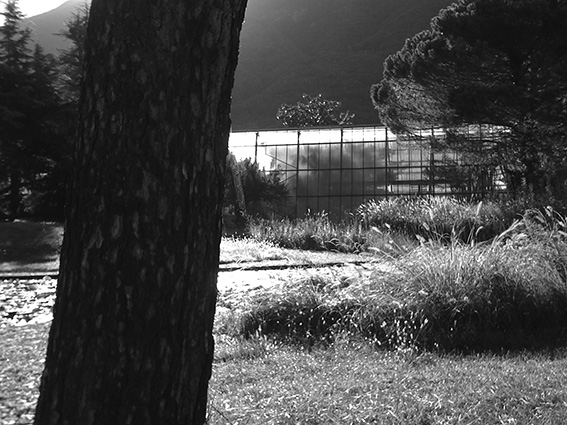P a o l o L. B ü r g i is adjunct professor of Landscape Architecture at the University of Pennsylvania since 1997, at POLIMI in Milano since 2015 and at the IUAV, Istituto Universitario di Architettura di Venezia, Italy, since 2003. He was visiting professor at the Università Mediterranea degli Studi in Reggio Calabria, Italy, and at the School of Architecture, Columbus Ohio. He has been practicing as a free-lance landscape architect since 1977, when he opened his own office in Camorino, Switzerland, after graduating in landscape architecture and planning at the Engineering School of Rapperswil in 1975 winning first prize. His working experience abroad, which enabled him to get to know other cultures as well as several encounters with the architect Luis Barragan, winner of the Pritzker Price, had considerable impact on his design activity and have not seized to influence his work.
Bürgi’s projects mainly deal with open space design and planning in connection with architecture in the public and private sector. Significant projects in Switzerland include the August Piccarde Space in Sierre, the Accademia di Architettura exterior spaces and Neuropsychiatric Hospital in Mendrisio, the Green Spiral in S. Antonino, the awarded Cardada Mountain Revitalization project in Locarno. Actually there are projects in progress in Cyprus, Spain, Germany and Italy.
He is expecially interested in exploration of artistic values. Over the years Bürgi participated in a number of international competitions winning several prizes, for example the open-air museum in Gorizia’s Karst, the “CERN-Route de Meyrin” emblematic reception area, the Helsinki Toolonlathi Parks competition, Finland, the Piazza Barche competition in Venezia-Mestre, Italy, the Botanical Garden in Geneva, the Palazzo dei Congressi competition in Lugano, the “Parkanlage Kreuzlingen Fäschtwiese”, Switzerland. In 2003 he was invited by the City of Hannover to participate in their project “Kunst-Garten-Kunst”.
Bürgi was Board member of the Swiss Federation of Landscape Architects. He has presented papers at conferences in Canada, USA, Argentina, Chile, China, Corea and throughout Europe, and his articles and design work have been published in a wide range of specialist literature. His international activities include lectures, seminars and studies for the City of Philadelphia, Columbus Ohio, Hannover, the Mountain Village of Bosco Gurin in Ticino and, in Italy, for the city of Genova, Padova, Venice, Pesaro, Montecatini and the Island of Torcello in the Venetian Lagoon.
In 1989 Bürgi was awarded the ‘Aspan Award’ for the recovery of Motto Frande Quarry and in 1999 he won the ‘JMG Prize for Excellence for Outstanding Archivement in the field of Visual Resource Management’. In 2003 he was awarded the ‘European Landscape Award Rosa Barba’ in Barcellona for the project Cardada, reconsidering a Mountain and the ‘Die Besten ‘3-bronce Award’ for the project Seashore and Lakeside in Kreuzlingen, Switzerland. ‘Venusta et Utilitas, Zur neuen Ästhetik urbaner Landwirtschaft, Landschaftspark Mechtenberg’ is a mentioned project for the Deutscher Landschaftsarchitektur Preis 2011. His practice is based in Camorino, Switzerland.

Paolo Bürgi founded Studio Bürgi in 1977 in Camorino, Switzerland. Here close to the Lake Maggiore all of the projects have their beginning.
In our work we look for a deeper perception of the landscape by refining human sensibilities for the qualities of nature and its invisible dimensions.
The office covers all areas of activity and work phases of landscape architecture and urbanism.
We speak english, italian , german, french, spanish. The international projects range from landscape architecture and open space design to urban planning and research studies.
TEAM
Paolo L. Bürgi, Prof. Arch. paesaggista Ing. FH
Maria Cristina Bürgi, Administration
Chiara Pradel, Arch. Mas-Arch. IUAV – USI
Paul Charles Bürgi, BSc ETH Arch.
Stephan Luis Bürgi, Arch. paesaggista MLA
Manola Louise Bürgi, Mas-Arch. EPFL
Partrizio Scarlata, Arch. UNIPA, Construction supervision arch.
